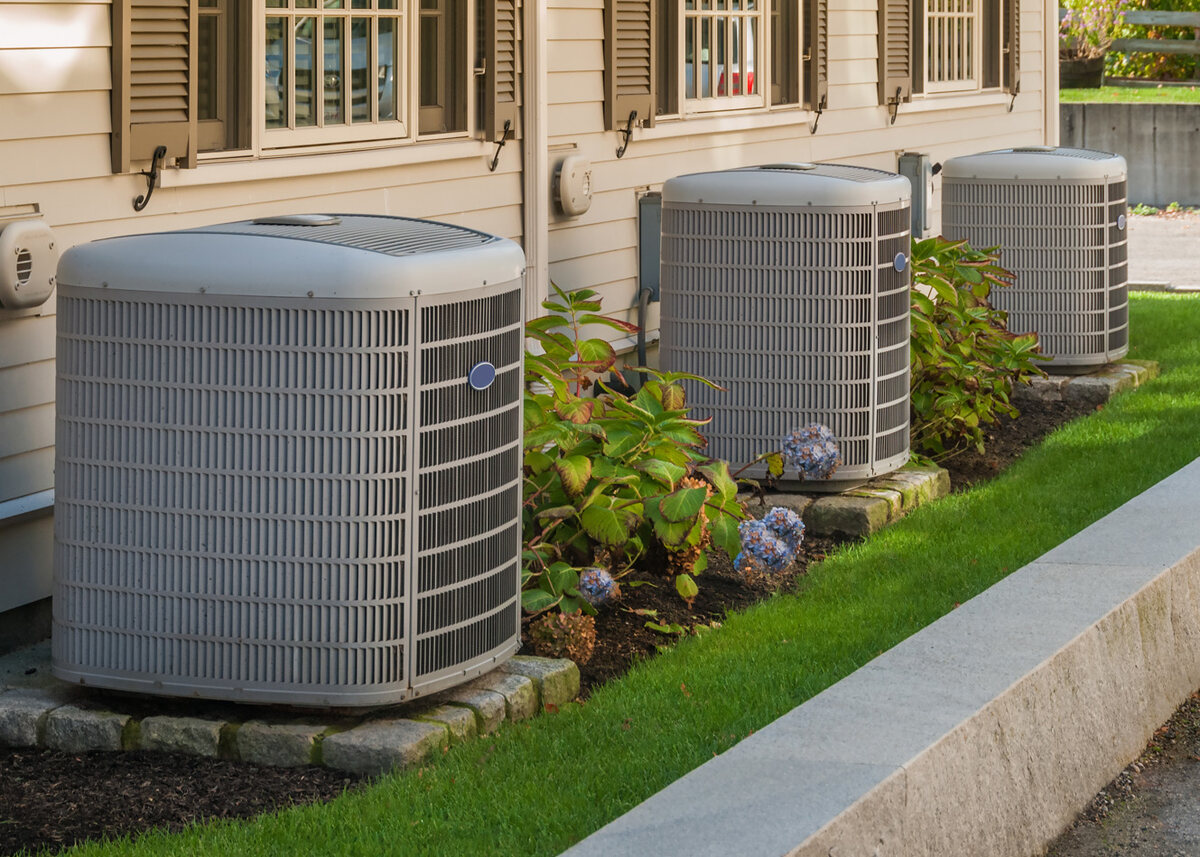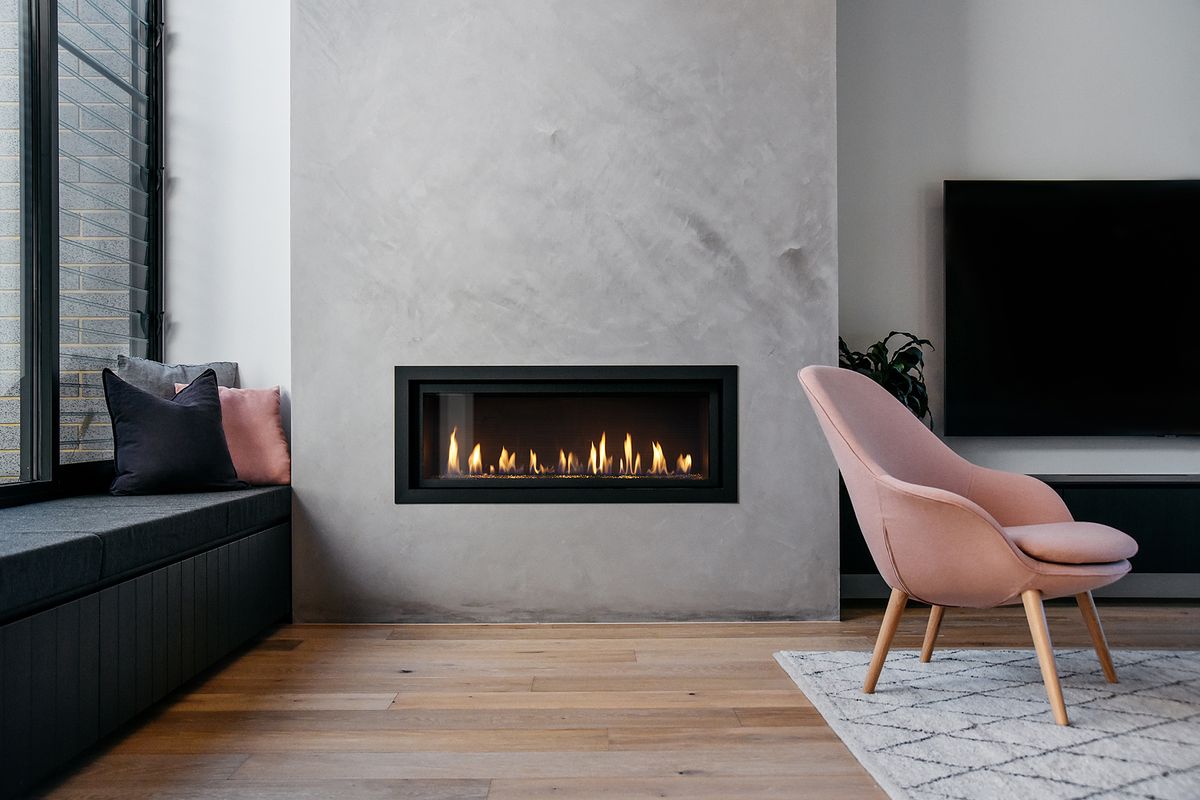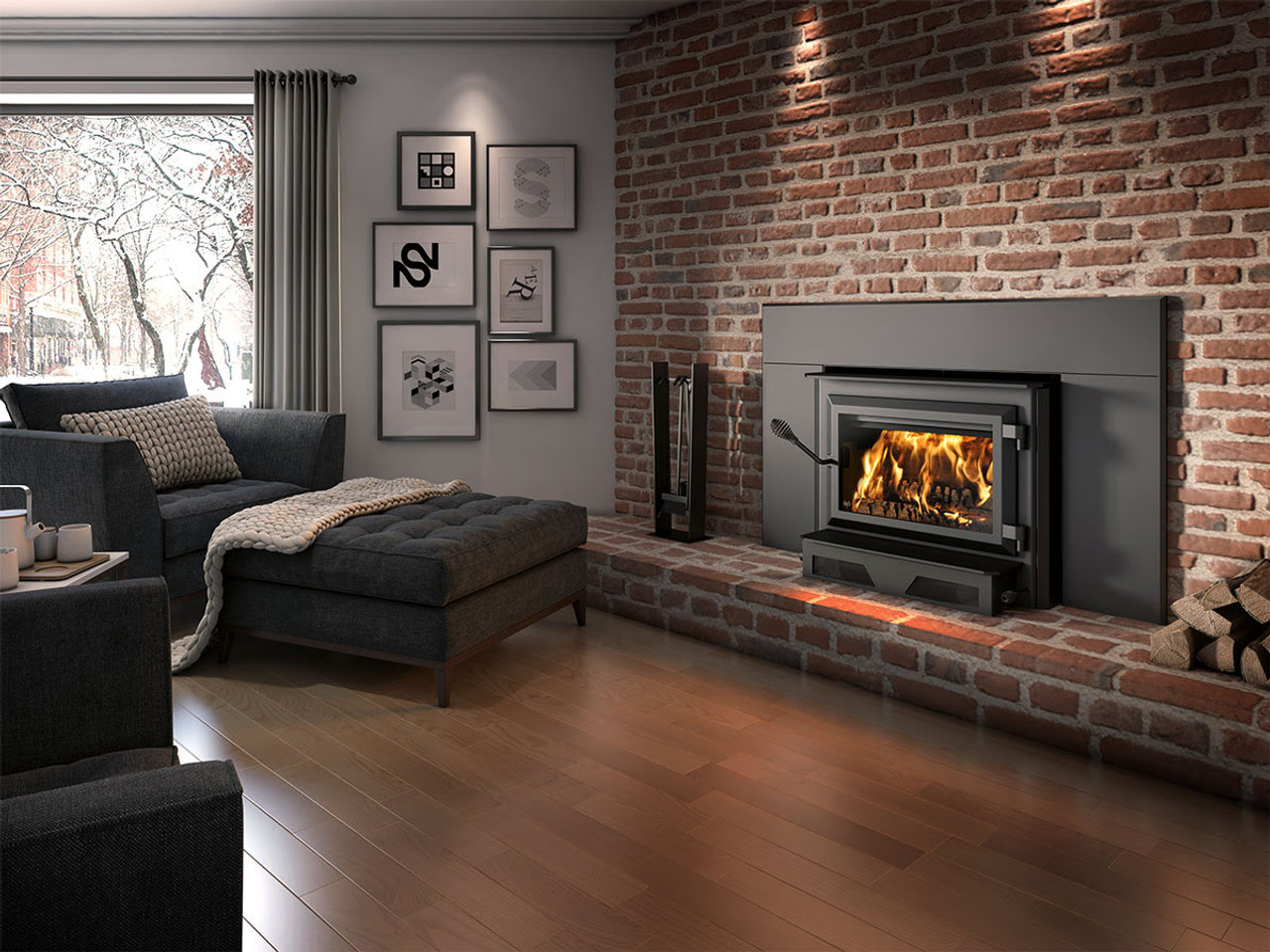

Articles
How Much Gas Does Fireplace Use
Modified: August 31, 2024
Discover the answer to the question "How much gas does a fireplace use?" in this informative article. Learn everything you need to know about fireplace gas consumption and find tips for optimizing efficiency.
(Many of the links in this article redirect to a specific reviewed product. Your purchase of these products through affiliate links helps to generate commission for Storables.com, at no extra cost. Learn more)
Introduction
A gas fireplace can be a cozy addition to any home, providing warmth and ambiance during the colder months. However, many homeowners often wonder how much gas their fireplace uses and how it impacts their energy bills. Understanding the gas consumption of your fireplace is essential for budgeting and optimizing its usage.
In this article, we will delve into the factors that affect gas fireplace usage, the different types of gas fireplaces and their fuel consumption, efficiency ratings, and provide some tips on reducing gas fireplace usage to save both energy and money.
Before we dive into the specifics, it is essential to note that gas fireplaces are available in various types, including natural gas and propane. The fuel type, design, and efficiency of your fireplace will ultimately impact its gas consumption. Additionally, gas fireplaces are typically rated by BTUs (British Thermal Units), which measure the heat output produced by the appliance.
Now, let us explore in more detail the burn rate of gas fireplaces and the factors that influence it.
Key Takeaways:
- Understanding the factors that influence gas fireplace usage, such as flame size, insulation, and thermostat settings, can help you optimize fuel consumption and balance comfort with energy efficiency.
- Choosing a gas fireplace with a high efficiency rating, implementing maintenance tips, and using zone heating can minimize fuel consumption, reduce energy costs, and still provide the warmth and ambiance of a cozy fireplace.
Read more: How Much To Convert To A Gas Fireplace
Understanding the Fireplace Burn Rate
The burn rate of a gas fireplace refers to the amount of gas consumed per hour of operation. This measurement is crucial in determining the energy efficiency and cost-effectiveness of your fireplace. The burn rate can vary based on several factors, including the size of the fireplace, the type of burner used, and the desired flame height.
Typically, gas fireplaces have adjustable flame settings that allow you to control the heat output and, subsequently, the burn rate. By reducing the flame height, less gas will be consumed, resulting in lower energy costs. However, it is important to strike a balance between comfort and energy efficiency.
Another factor that affects the burn rate is the insulation of your fireplace and the room in which it is installed. A well-insulated fireplace and room will retain heat more efficiently, reducing the need for the fireplace to continuously burn at high levels. Proper insulation can minimize heat loss and help you achieve a more efficient burn rate.
Additionally, consider the overall temperature of your home. If your thermostat is set at a lower temperature, your gas fireplace may need to work harder to provide sufficient warmth, leading to higher gas consumption. Keeping your home at a comfortable temperature can help optimize the burn rate and reduce gas usage.
It is worth mentioning that modern gas fireplaces often come equipped with electronic ignition systems and thermostats. These features allow for greater control over the burn rate by automatically adjusting the flame height based on the desired room temperature. This not only enhances convenience but also promotes energy efficiency.
By understanding the factors that influence the burn rate of your gas fireplace, you can make informed decisions about its usage and optimize its efficiency. In the next section, we will explore the various factors that can impact the gas consumption of your fireplace.
Factors Affecting Gas Fireplace Usage
Several factors can impact the gas consumption of a fireplace. Understanding these factors will help you manage and optimize your gas fireplace usage.
1. Flame Size: The size of the flame directly affects the amount of gas consumed. Higher flame settings will result in greater gas usage. Consider adjusting the flame height based on your comfort needs and energy efficiency goals.
2. Insulation: The insulation of your home and fireplace plays a significant role in gas consumption. Well-insulated fireplaces and rooms will retain heat better, allowing for more efficient use of the fireplace and reducing gas consumption.
3. Room Size: The size of the room where the gas fireplace is located will impact its usage. Larger rooms may require more gas to heat adequately, while smaller rooms may require less. Consider the room size when setting the flame height to avoid over or underutilizing the fireplace.
4. Thermostat Settings: The thermostat setting of your home can affect gas fireplace usage. If your home’s thermostat is set at a lower temperature, the fireplace may need to work harder to provide warmth, resulting in higher gas consumption. Finding a comfortable temperature balance can help optimize gas usage.
5. Outdoor Temperatures: Cold outdoor temperatures can impact gas fireplace usage. In colder climates, the fireplace may need to be used for longer periods or at higher flame sizes to maintain desired indoor temperatures. Awareness of outdoor temperatures can help you anticipate potential fluctuations in gas usage.
6. Fireplace Maintenance: The condition of your gas fireplace plays a role in its efficiency. Regular maintenance, such as cleaning the burners and ensuring proper ventilation, can improve gas consumption. It is recommended to have your fireplace professionally serviced annually.
7. Drafts and Ventilation: Drafts around your gas fireplace can impact its efficiency and gas consumption. Ensure that the fireplace area is properly sealed and that there is adequate ventilation to prevent wasted heat and increased gas usage.
By considering these factors and adjusting the settings accordingly, you can optimize the usage of your gas fireplace, minimize gas consumption, and save on energy costs. In the next section, we will explore the different types of gas fireplaces and their fuel consumption rates.
Types of Gas Fireplaces and Their Fuel Consumption
Gas fireplaces come in various types, each with its own fuel consumption rate. Understanding these differences will help you choose the right fireplace for your needs and manage its fuel usage effectively.
1. Direct Vent Gas Fireplaces: Direct vent gas fireplaces are popular for their efficiency and safety. They utilize a sealed combustion system that draws air from outside for combustion and expels the exhaust gases. This design minimizes heat loss, resulting in higher efficiency and lower fuel consumption compared to other types. Direct vent fireplaces typically have a fuel consumption rate of around 20,000-35,000 BTUs per hour.
2. Ventless Gas Fireplaces: Ventless gas fireplaces, also known as vent-free fireplaces, do not require a chimney or external venting system. These fireplaces burn the gas cleanly and release the heat directly into the room. While ventless fireplaces provide a high level of heat output, they tend to have a higher fuel consumption rate, usually ranging from 30,000-40,000 BTUs per hour.
3. Gas Inserts: Gas inserts are designed to be installed within an existing fireplace opening. They offer improved energy efficiency and reduced fuel consumption compared to traditional open fireplaces. The fuel consumption rate of gas inserts can vary depending on the size, model, and insulation of the existing fireplace.
4. Gas Log Sets: Gas log sets are a popular choice for homeowners who want the look and feel of a traditional wood-burning fireplace without the hassle. These sets consist of artificial logs and a gas burner system. The fuel consumption rate of gas log sets varies based on the size, flame setting, and BTU output of the chosen set.
It is important to note that while direct vent gas fireplaces are generally more fuel-efficient, the actual fuel consumption can vary depending on factors such as the quality of the installation, insulation, flame settings, and usage patterns. Consulting with a professional or referring to the manufacturer’s specifications can provide more accurate information about the fuel consumption of a specific gas fireplace model.
When considering a gas fireplace, take into account your heating needs, desired aesthetic, and budget, balancing these factors with the fuel consumption rate to make an informed decision. In the next section, we will explore efficiency ratings and their impact on gas fireplace usage.
To estimate how much gas your fireplace uses, check the BTU rating of the fireplace and the cost of gas per therm in your area. Multiply the BTU rating by the number of hours you use the fireplace, then divide by the number of BTUs in a therm of gas.
Efficiency Ratings and Gas Fireplace Usage
Efficiency ratings are an important factor to consider when evaluating gas fireplaces and their impact on fuel consumption. These ratings indicate how effectively a fireplace converts gas into heat and can help you determine the most efficient option for your needs.
In the United States, gas fireplaces are typically rated using the Annual Fuel Utilization Efficiency (AFUE) system. AFUE represents the percentage of fuel that is converted into usable heat. Higher AFUE ratings indicate higher efficiency and lower fuel consumption.
When comparing gas fireplaces, it is recommended to look for models with AFUE ratings of 70% or higher. The most efficient gas fireplaces can reach AFUE ratings of 90% or more, meaning that they convert at least 90% of the fuel into heat.
Choosing a gas fireplace with a higher efficiency rating can lead to significant energy savings over time. Not only does it reduce your gas consumption, but it also ensures that more of the gas you use is converted into heat, maximizing the comfort and warmth provided by the fireplace.
Efficiency can also be influenced by other factors such as the quality of insulation, proper installation, and regular maintenance. Keeping your fireplace well-maintained and ensuring that it is properly sealed and insulated can further enhance its efficiency and reduce fuel consumption.
It is essential to note that efficiency ratings can vary depending on the type and model of the gas fireplace. Direct vent gas fireplaces often have higher efficiency ratings compared to ventless models due to the sealed combustion system and improved heat retention.
By choosing a gas fireplace with a high efficiency rating and taking steps to optimize its usage, such as adjusting the flame height and maintaining proper insulation, you can minimize fuel consumption and lower your energy costs while still enjoying the warmth and ambiance of a gas fireplace.
In the next section, we will provide some tips on reducing gas fireplace usage and maximizing energy efficiency.
Read more: How Much To Install A Gas Fireplace
Tips for Reducing Gas Fireplace Usage
While gas fireplaces provide warmth and ambiance, it is important to be mindful of their fuel consumption and take steps to reduce usage without sacrificing comfort. Here are some tips to help you optimize gas fireplace usage and maximize energy efficiency:
1. Adjust the Flame Height: Lowering the flame height can reduce gas consumption without compromising warmth. Experiment with different flame settings to find a balance between comfort and efficiency.
2. Use Zone Heating: Instead of relying solely on your gas fireplace for heating the entire house, consider using it for zone heating. Heat the rooms you frequently use while reducing the heat in less frequently used areas, which can help reduce overall gas usage.
3. Enhance Insulation: Improve the insulation of your home and fireplace area to minimize heat loss. This will allow your gas fireplace to operate more efficiently and reduce the need for prolonged usage.
4. Maintain Regular Maintenance: Schedule annual maintenance for your gas fireplace to ensure it is functioning optimally. Cleaning the burners, checking the ignition system, and verifying proper ventilation will help improve efficiency and reduce gas consumption.
5. Use Programmable Thermostats: Consider installing a programmable thermostat to regulate the temperature in your home. This allows you to set specific temperature levels for different times of the day, ensuring your gas fireplace operates efficiently and reduces unnecessary gas consumption.
6. Use Window Coverings: Close curtains or blinds at night to prevent heat loss through windows. Additionally, open them during the day to let in sunlight, which can help warm the room naturally and reduce reliance on the gas fireplace.
7. Consider Supplemental Heating Options: If appropriate for your home, consider using supplemental heating options such as electric space heaters in specific areas instead of relying solely on the gas fireplace. This can help distribute heat more efficiently and reduce gas fireplace usage.
8. Use Timers: Install timers to control the operation of your gas fireplace. Set specific times for it to turn on and off, ensuring you only use it when needed and reducing unnecessary gas consumption.
By implementing these tips, you can effectively manage and reduce gas fireplace usage while still enjoying the warmth and comfort it provides. Be mindful of the energy efficiency of your fireplace, and make adjustments that suit your comfort needs and energy conservation goals.
Next, let’s conclude our discussion on gas fireplace usage.
Conclusion
Gas fireplaces provide a cozy and inviting atmosphere while offering efficient and convenient heating. Understanding the factors that affect gas fireplace usage and implementing strategies to optimize fuel consumption can help you save energy and reduce costs.
Factors such as flame size, insulation, room size, thermostat settings, outdoor temperatures, maintenance, and ventilation all play a role in gas fireplace usage. By considering these factors and adjusting settings accordingly, you can find a balance between comfort and energy efficiency.
When choosing a gas fireplace, consider the different types available and their fuel consumption rates. Direct vent gas fireplaces often offer higher efficiency and lower fuel consumption compared to ventless models. Additionally, look for efficiency ratings and select a fireplace with an AFUE rating of 70% or higher to maximize energy savings.
To further reduce gas fireplace usage, implement tips such as adjusting the flame height, using zone heating, improving insulation, scheduling regular maintenance, using programmable thermostats, utilizing window coverings, considering supplemental heating options, and using timers.
By implementing these strategies and being mindful of your gas fireplace usage, you can enjoy the warmth and ambiance it provides while minimizing fuel consumption and lowering energy costs.
Remember, optimizing gas fireplace usage not only benefits your wallet but also contributes to a more environmentally friendly approach to heating your home. Make informed choices, prioritize energy efficiency, and enjoy the comfort of your gas fireplace responsibly.
Frequently Asked Questions about How Much Gas Does Fireplace Use
Was this page helpful?
At Storables.com, we guarantee accurate and reliable information. Our content, validated by Expert Board Contributors, is crafted following stringent Editorial Policies. We're committed to providing you with well-researched, expert-backed insights for all your informational needs.















0 thoughts on “How Much Gas Does Fireplace Use”